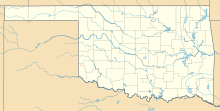Antelope Hills Expedition
| Antelope Hills Expedition | |||||||
|---|---|---|---|---|---|---|---|
| Part of the American Indian Wars, Texas-Indian Wars, Apache Wars | |||||||
 Comanches of West Texas in war regalia. Painting by Lino Sánchez y Tapia, circa 1830s |
|||||||
|
|||||||
| Belligerents | |||||||
|
Tonkawa Anadarko Shawnee |
Comanche Kiowa Apache |
||||||
| Commanders and leaders | |||||||
|
Placido |
Iron Jacket† Peta Nocona |
||||||
| Strength | |||||||
| ~220 | 200–600 | ||||||
| Casualties and losses | |||||||
| ~50 killed or wounded | 76 killed 16 captured |
||||||
|
|
|||||||
The Antelope Hills expedition was a campaign from January-May 1858 by the Texas Rangers and members of other allied Native American tribes against Comanche and Kiowa villages in the Comancheria. It began in western Texas and ended in a series of fights with the Comanche tribe on May 12, 1858, at a place called Antelope Hills by Little Robe Creek, a tributary of the Canadian River in what is now Oklahoma. The hills are also called the "South Canadians," as they surround the Canadian River. The fighting on May 12, 1858, is often called the Battle of Little Robe Creek.
The years 1856-58 on the Texas frontier were particularly vicious and bloody as settlers continued to encroach into the Comancheria. They plowed under valuable hunting grounds, and the Comanche lost grazing land for their herds of horses. In addition, the United States had done a great deal to block the Comanches' traditional raids into Mexico. Finally, the Comanches struck back with a series of ferocious and bloody raids against the settlers.
The Army proved wholly unable to stem the violence. Not only were units being transferred, but federal law and numerous treaties barred the Army from attacking Indians in the Indian Territories. Although many Indians, such as the Cherokee, were trying to farm and live as settlers, the Comanche and Kiowa continued to live in that part of the Indian Territories which was traditionally the Comancheria, while raiding into Texas.
As the American Civil War drew closer, federal forces were moved about even more and the 2nd Cavalry was transferred from Texas to Utah (eventually the US Army disbanded the 2nd Cavalry, as it fell apart when the War began in 1860). The loss of federal troops led Gov. Hardin R. Runnels in 1858 to re-establish disbanded battalions of Texas Rangers. Thus, on January 27, 1858, Gov. Runnels appointed John Salmon "Rip" Ford, a veteran Ranger of the Mexican-American War and frontier Indian fighter, as captain and commander of the Ranger, Militia and Allied Indian Forces, and ordered him to carry the battle to the Comanches in the heart of the Comancheria.
...
Wikipedia

